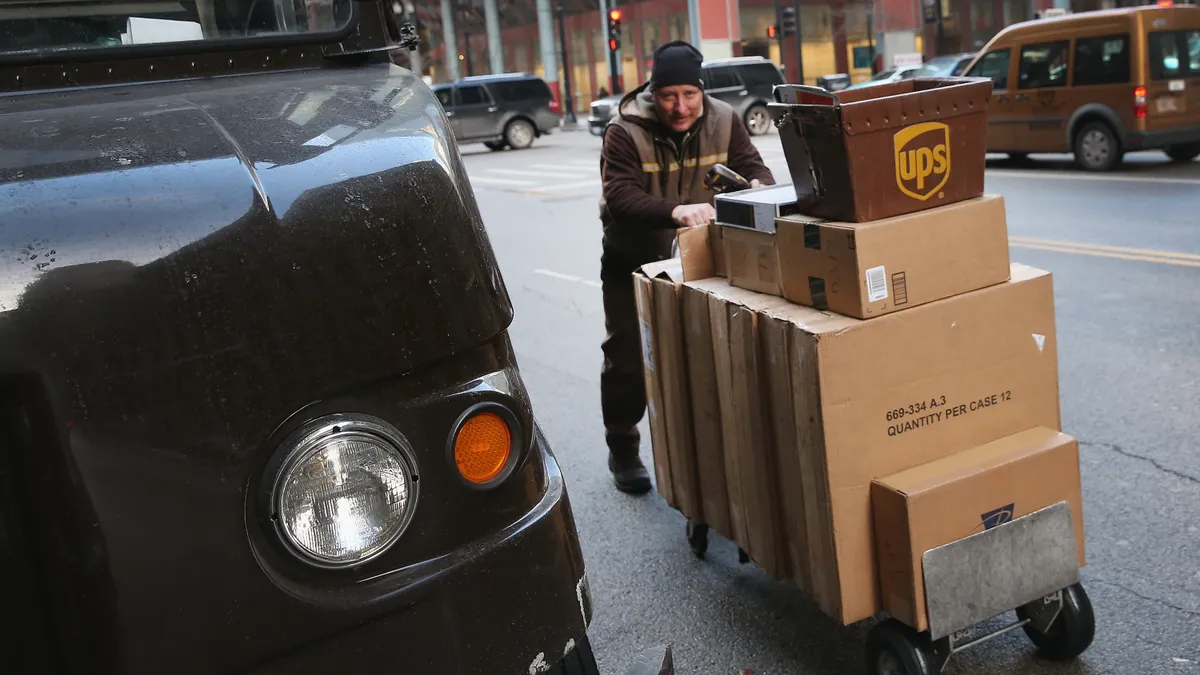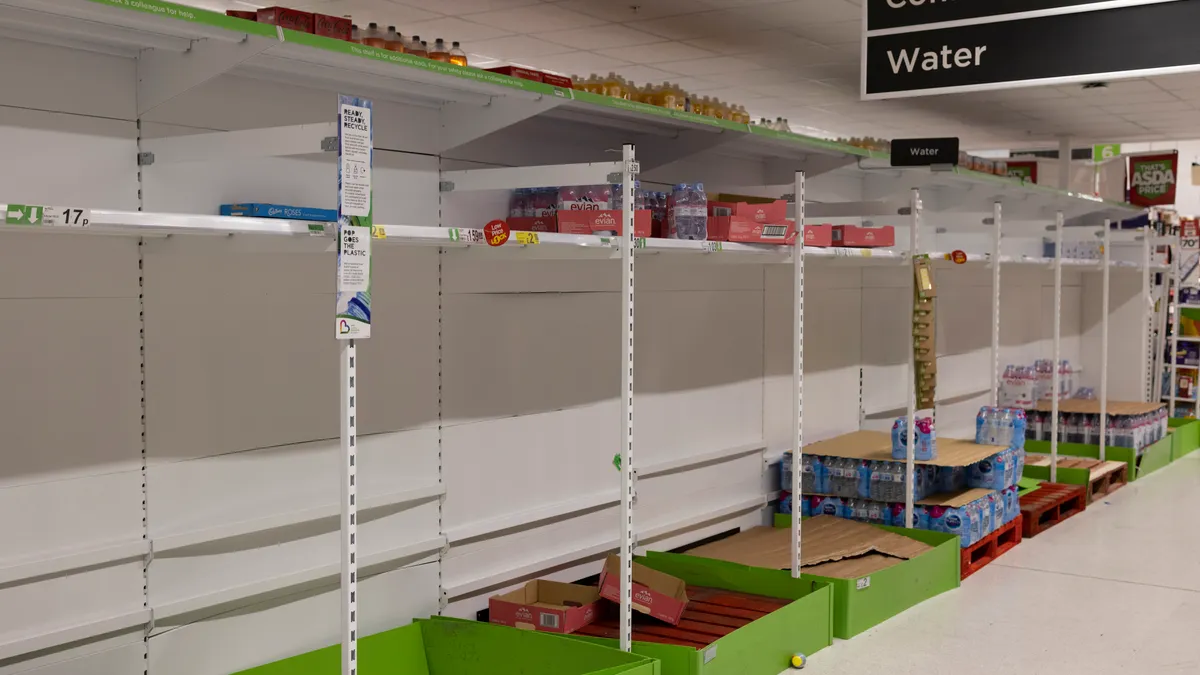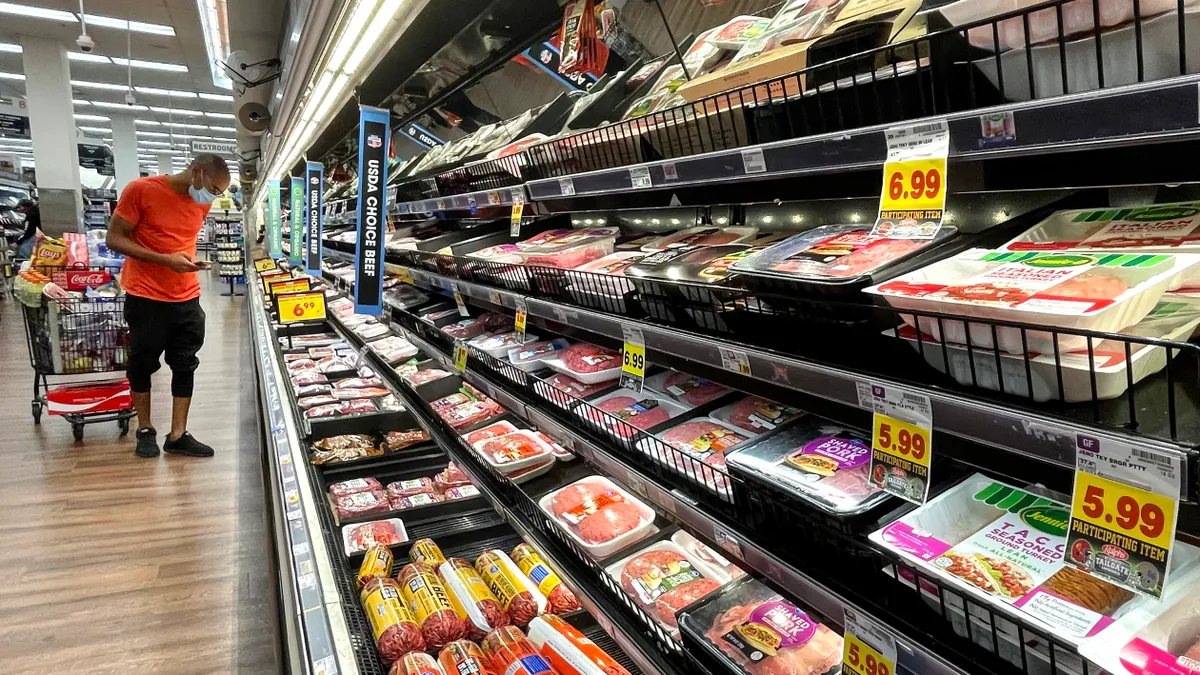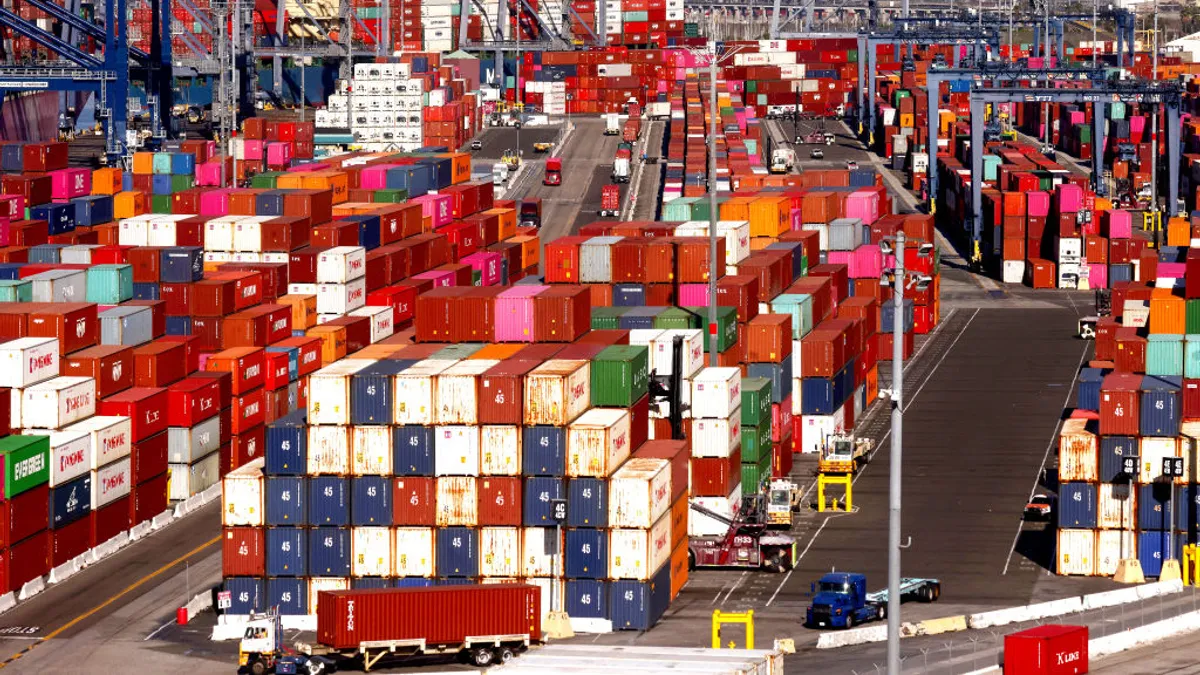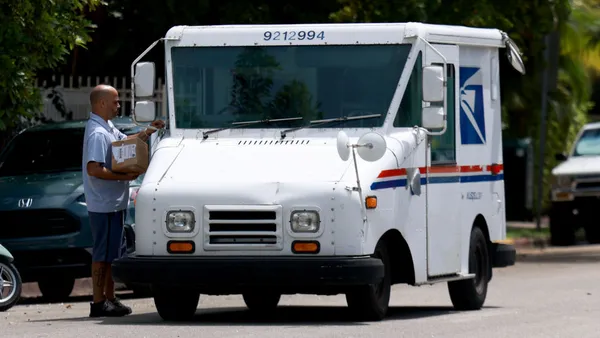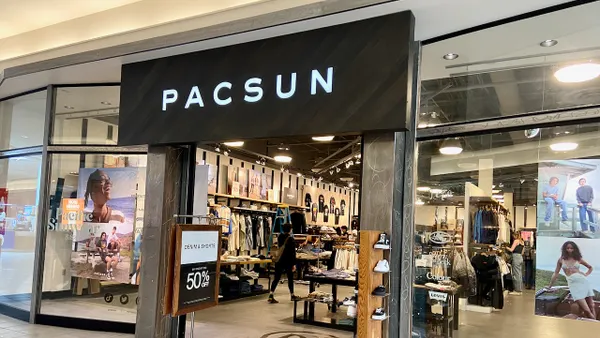Editor's note: This story is part of a series on the trends, opportunities and challenges supply chains will face in 2022. Read the full outlook here.
Higher annual rate increases and expanded surcharges will make 2022 an even more expensive year for unprepared parcel shippers.
A 5.9% general rate hike is common across U.S. parcel carriers this year, higher than the 4.9% increase many put into effect in 2021. When factoring in FedEx and UPS' adjustments to their surcharges, such as for fuel or oversized package handling, the overall increase in what shippers are paying "is actually in excess of 9%," said Tom Nightingale, CEO at AFS Logistics.
"Even just the spread between the headline rate and the actual rate is exceptionally high this year," he added.
Announced general rate increases by parcel carriers
| Effective 2021 | Effective 2022 | |
|---|---|---|
| FedEx (Express and Ground) | 4.9% | 5.9% |
| UPS | 4.9% | 5.9% |
| DHL Express (U.S.) | 4.9% | 5.9% |
| Lone Star Overnight | 4.9% | 5.9% |
| Pitney Bowes (e-commerce services) | 5.9% | 5.9% |
NOTE: UPS' general rate increases were confirmed by a spokesperson. Both of its increases took effect in December the year prior.
Carriers say they are instituting these price hikes to keep deliveries on time in a period of growing demand. UPS said in a statement its rate increases "support ongoing enhancements to our network while maintaining the high service levels our customers expect." For FedEx, the increases reflect higher costs during a "challenging operating environment," it announced in September.
With volumes elevated and capacity tight, FedEx and UPS have prioritized more profitable deliveries, such as packages from small- and medium-sized businesses, while implementing surcharges and rate hikes to help them invest in bolstering their networks.
This approach has worked for the carriers financially. UPS grew revenue per piece by 14% in Q3, as the company increased its share of small- and medium-sized business volume and "utilized surcharges to match demand with available capacity," according to an investor presentation. In FedEx's most recently reported quarter, revenue per package at both its Express and Ground units grew YoY, and Chief Marketing Officer Brie Carere said on an earnings call that small business was its fastest-growing segment.
Shippers, meanwhile, have seen higher costs for ground delivery services, which are responsible for the bulk of e-commerce volumes that have surged amid the pandemic.
Ground parcel rates have already been above their 2018 levels since 2019, but they're expected to reach new heights in Q1 of this year, according to the January 2022 Cowen/AFS Freight Index. Rates jumped in the prior quarter "due to the increase in mix of residential shipments, peak surcharges, increased fuel surcharges and tighter pricing controls by the carriers," per an AFS presentation on the index.
Per-package rates soar for ground parcel shipping
Nightingale said excess parcel volume often spills over into LTL transport, with the same pattern occurring for LTL into truckload, and truckload into intermodal. What makes the current environment especially difficult for shippers is that all other transport modes are operating at or above capacity, clogging this normal flow.
"This is probably one of the few times in my 32 years in this business where we have seen all modes at or above their peak capacity levels," Nightingale said.
Delivery surcharges pack more of a punch in 2022
Announced rate increases don't fully reflect how much the changes to delivery surcharges will cost shippers in 2022, said Shipware founder and co-CEO Trevor Outman. Surcharges have grown to be a significant portion of some companies' transportation spend, sometimes climbing to as much as 40% versus 10% to 15% in years past, he added.
"The sophisticated shippers will negotiate (with carriers) a general rate increase cap, or the general rate increase won't exceed a certain amount, but that doesn't apply to surcharges," Outman said. "There are probably 100 different surcharges of different flavors, descriptions and amounts. So to just focus on the general rate increase and service discounts is missing the impact entirely."
Companies shipping bulkier, oddly-sized items through FedEx and UPS will be hit particularly hard with surcharges. Additional handling and oversized package surcharges have increased for several shipping zones at both carriers.
Certain residential deliveries will also see price increases. FedEx introduced a $1 per-package delivery and returns surcharge assessed on packages using its Ground Economy services. And UPS has begun applying a remote area surcharge for certain ZIP codes in the 48 contiguous U.S. states. According to a Shipware analysis of the surcharge, roughly 4.7 million more addresses will become more expensive to deliver to as a result.
Reducing spend in a carrier-friendly market
Despite the pricing power parcel carriers currently hold in the market, there are avenues for shippers to pare down their transportation spend in the year ahead. Smaller shippers are in a good position to renegotiate contracts with FedEx and UPS due to the carriers' increased interest in retaining and winning that business, Outman said.
Additionally, FedEx and UPS aren't the only game in town, and more shippers are diversifying their mix of carriers to include regional players.
"Regionals are finally getting their due because of what's happened in the marketplace, with UPS and FedEx having peak restrictions, because of the massive amounts of volume that have come through, especially on e-commerce," said Melissa Priest, founder and CEO of Alexandretta Transportation Consulting. "Shippers haven't had much choice but to really examine and make use of the regionals when they can."
Shippers can also look inward to reduce their transportation spend. In a news release on European parcel rate hikes, consulting firm BCI Global recommended companies move distribution networks closer to local markets and explore whether slower, less-expensive shipping options could replace current services. Priest noted that shippers with multiple distribution centers should be aware of how much costs can increase depending on shipping distance.
"If you're only keeping umbrellas in one place, because maybe they're in a rainy location, but you do send a few of them someplace not so rainy during the year, are those few that you send further away chipping away at your profits?" Priest said.



